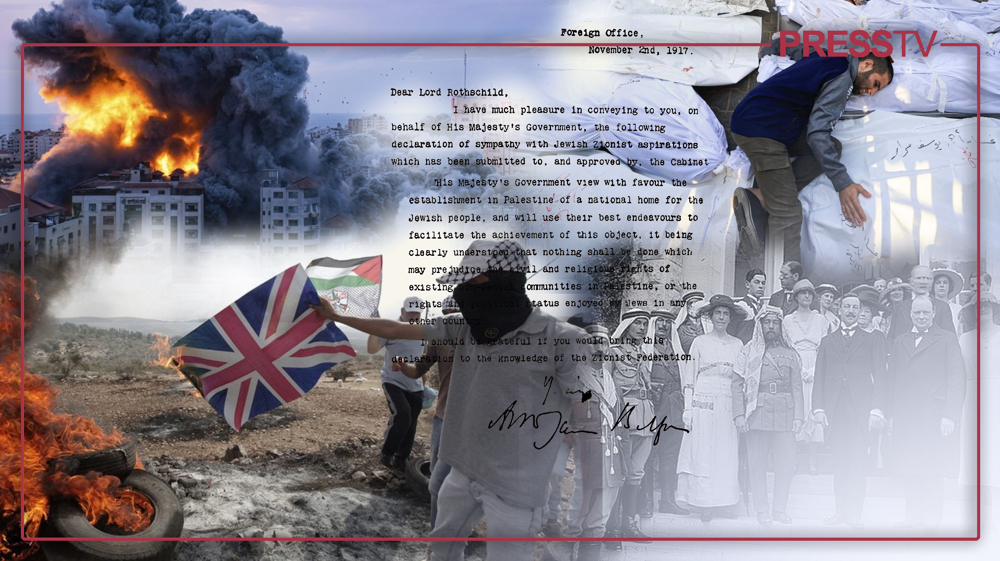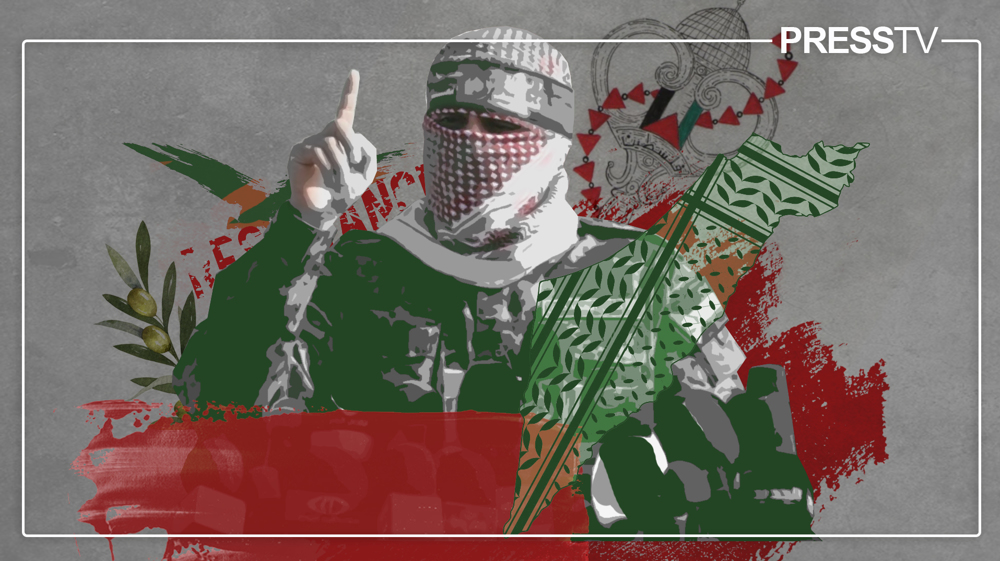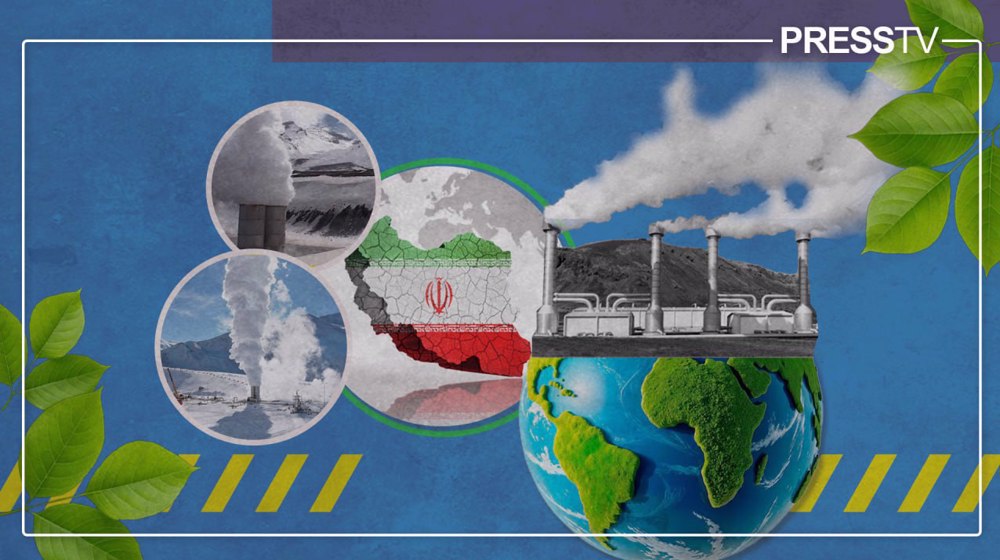Explainer: Israel’s 2023 Gaza genocide has roots in 1917 Balfour Declaration
By Humaira Ahad
Mohammad, Jad and Layan were killed along with their baby sister Zain, mother Lubna and father Samer in an Israeli airstrike in the besieged Gaza Strip earlier this week.
They were yet to celebrate their tenth birthday. Like children in other parts of the world, these kids were full of life, excited at the arrival of their baby sister who had become the heartthrob of the family.
Since October 7, more than 8,500 Palestinians have been killed in the coastal territory often described as the world’s largest open-air prison, 40 percent of them children like Mohammad, Jad, Layan and Zain.
However, the plight of Palestinians did not start four weeks ago. It’s rooted in history, in the usurpation of their land, destruction of their homes, denial of their rights, and ethnic cleansing.
In 1917, then-British foreign secretary Arthur Balfour addressed a letter to Lionel Walter Rothschild, a figurehead of the British Zionist community, on the establishment of a “Jewish land” in Palestine.
The contents of the letter, drafted on November 2, 1917, came to be known as the Balfour Declaration.
The declaration was made during World War 1 (1914-1918) and formed an important part of the British mandate after the fall of the Ottoman Empire.
The letter sealed the fate of Palestinians and opened a chapter marked by occupation and apartheid.
History of the Balfour Declaration
Awni Abd al-Hadi, a noted Palestinian political figure, writes in his memoirs that the declaration was made by an English foreigner who had no claim to Palestine, to a foreign Jew who had no right to it.
After World War I, under a controversial system, the countries that faced defeat during the war had to hand over the territories they controlled to the states that emerged victorious.
It is believed that this system aimed to allow the winning states to administer the newly emerging countries until they could become independent.
However, the mandate system was not followed in the case of Palestine, rather a very strange and deeply controversial decision was taken concerning the Palestinian territory.
The Balfour Declaration emerged as a public pledge to establish “a state for Jews” in Palestine.
The British government declared that it aimed to establish a “Jewish National home” in Palestine at a time when Jews did not constitute even 10 percent of the total population of the Palestinian state.
The earlier drafts of the controversial declaration even used the phrase “the reconstitution of Palestine as a Jewish State”, clearly signaling the plan of ethnic cleansing of Palestinians by the British state.
In 1920, the third Palestinian Congress in Haifa rejected the British government’s Zionist project and called the declaration a violation of international law and the rights of native Palestinians.
The British disregarded the declaration of the Palestinian Congress and in 1922 Arthur Balfour and then British Prime Minister David Lloyd George held a meeting with Zionist leader Chaim Weizmann announcing that the Balfour Declaration “always meant an eventual Jewish state”.
The plan was implemented and Britain began to facilitate the immigration of Jews to Palestine. Between 1922 and 1935, the Jewish population saw a rise of 27 percent from a mere 9 percent before 1922.
Years following the Balfour Declaration
With the Palestinian land being illegally and forcibly confiscated by the British and handed over to the Zionist settlers, tensions rose leading to the Arab Revolt from 1936 to 1939.
In 1939, a general strike was called in Palestine in protest against British colonialism and illegal Jewish immigration. The month-long strike was followed by a British crackdown on Palestinians.
After that, the world saw Palestinian homes being demolished and their lands being usurped in line with the plan orchestrated by the British as a favor to Zionist lobbies in the West.
By the end of 1939, Britain and allied Zionist groups started a full-fledged campaign of crushing Palestinians. Villages were destroyed, curfews were imposed, and thousands were killed, injured and put behind bars to pave the ground for the establishment of the Zionist entity.
Zionist terrorist groups like Haganah, Lehi and Irgun worked under the British-led umbrella organization dubbed “counterinsurgency force”. Later, these groups formed the Israeli military force.
In 1947, until the United Nations passed the so-called “Resolution 181” calling for the partition of the state of Palestine, Jews were a non-entity in what eventually became the occupied territories.
“Resolution 181” was passed by the end of World War II and stated that Palestine be divided into Arab and Jewish entities, allotting 55 percent of the total land to Jews, in breach of international law.
By the end of World War II, the British mandate in Palestine expired. They left and Zionist groups embarked on a violent expedition to expand the occupying, illegitimate entity.
Between 1947 and 1949, hundreds of Palestinian villages and towns were razed down and tens of thousands of local inhabitants were killed in a textbook example of ethnic cleansing.
Those who survived the genocidal campaign were forced to abandon their homes and belongings. Around 750,000 Palestinians left their ancestral homes. This large-scale massacre of Palestinians and their mass exodus led to “Nakba” or “catastrophe”.
Almost 78 percent of Palestinian land was illegally seized by Zionist forces and eventually on May 15, 1948, the Zionist entity formally came into existence.
This was followed by an Arab-Israel war between Egypt, Lebanon, Jordan, Syria and the Israeli regime. Gaza Strip came under the control of Egypt and Jordan took over the West Bank.
Nakba was followed by “Naksa” or “setback” when the Zionist regime occupied other parts of Palestine including the Gaza Strip, the West Bank, East Jerusalem, the Syrian Golan Heights, and the Egyptian Sinai Peninsula during the Six-Day War against the Arab states.
It was followed by the regime constructing illegal settlements in the Gaza Strip and West Bank. An apartheid system was created where illegal Jewish settlers were given all the rights and privileges whereas native Palestinians had to live under a military occupation and face discrimination.
This system of apartheid led to the first intifada in December 1987 when Palestinians rallied against the illegal occupation of Israel. The popular uprising continued for six years when the Zionist regime adopted the policy of “break their bones”, killing thousands of Palestinians.
During the first intifada, the Gaza-based resistance group Hamas came into existence.
The second intifada came in September 2000 when Aerial Sharon, who later became the prime minister of the regime, made a provocative visit to the holy Al Aqsa Mosque.
During this time, the construction of settlements on usurped Palestinian land became rampant. Palestinian infrastructure and livelihood were destroyed. The regime pushed the original inhabitants to isolated blocks, even banning them from using regular roads.
After the second intifada ended in 2005, Israeli settlements in Gaza were dismantled and legislative elections were held for the first time in the territory in which Hamas secured a majority.
Hamas’ rise to power in Gaza and the ouster of the Zionist regime from the coastal territory led to the crippling humanitarian blockade that has only intensified over the years.
For nearly two decades, more than two million people have been reeling under the blockade.
During this period, the regime has frequently attacked the Gaza Strip. In 2008, 2012, 2014, 2021, and now in 2023, thousands of Palestinians have been killed by the occupying regime.
What started with the Balfour Declaration 106 years ago continues today – the extermination of Palestinians, most of them blooming buds such as Mohammad, Jad, Layan and Zain.
Iran says $2bn of frozen assets released by neighboring country
Somalia erupts in massive protests over Israel's recognition of Somaliland
Israel committing 'systematic genocide' against Palestinian prisoners: Advocacy groups
US issues new sanctions targeting Iran’s defense projects
Boeing signs $8.6 billion contract to supply Israel with F‑15 fighter jets
VIDEO | Press TV's news headlines
VIDEO | Israel opens Gaza Valley dam, causing floods and tormenting the displaced
Tony Blair shielded UK troops from trials over Iraqi detainee’s killing, files reveal










 This makes it easy to access the Press TV website
This makes it easy to access the Press TV website